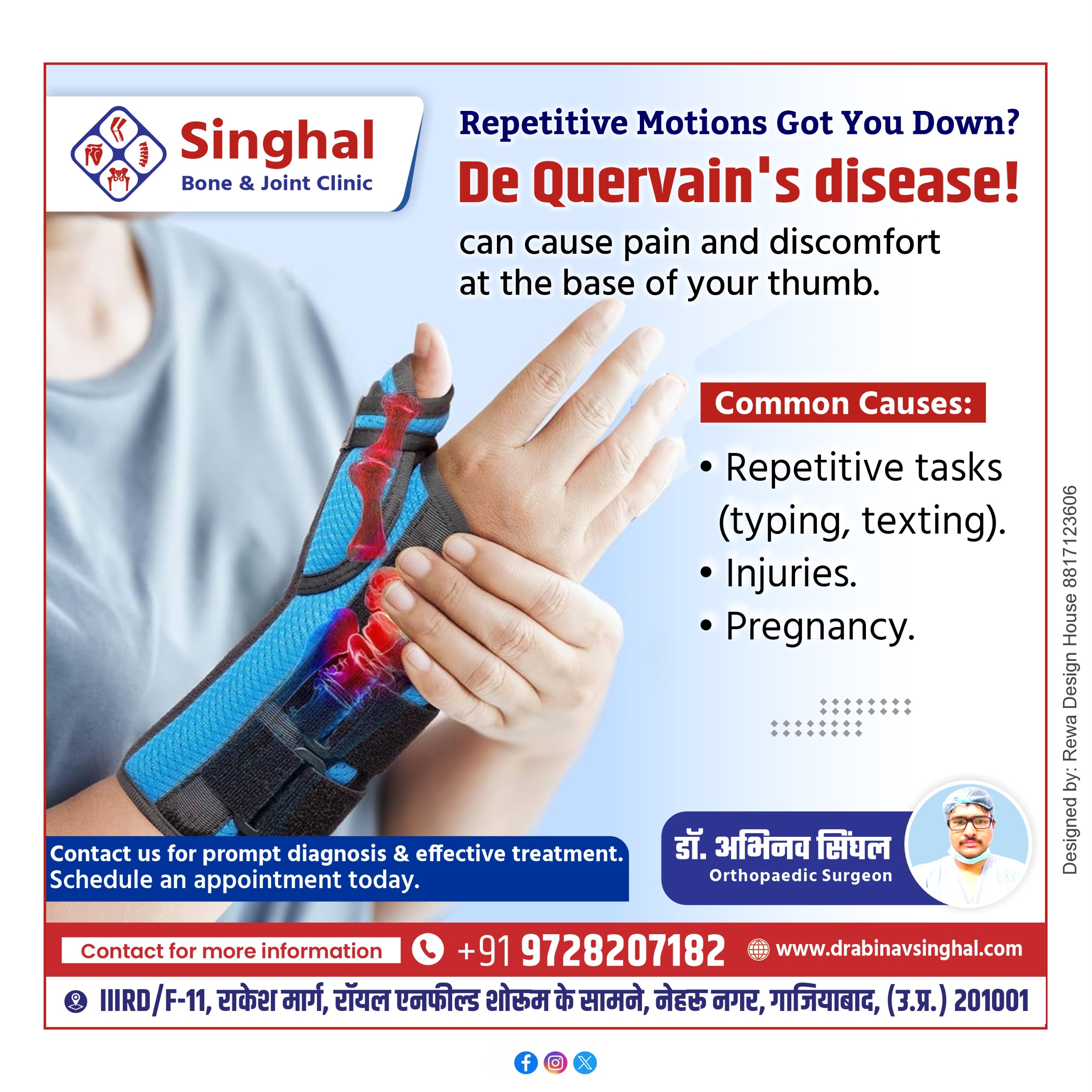Subtotal $0.00
What is De Quervain’s Disease Treatment?
De Quervain’s Tenosynovitis, also known simp De Quervain’s Disease Treatment, is a painful condition that affects the tendons on the thumb side of your wrist. It occurs when the tendons around the base of the thumb become irritated or constricted, often due to repetitive hand or wrist movements. The inflammation can lead to swelling, pain, and reduced mobility, making everyday tasks difficult.
It was first described in 1895 by Swiss surgeon Fritz de Quervain and is considered one of the most common types of repetitive strain injuries (RSIs).
Anatomical Insight: What Happens Inside the Wrist De Quervain’s Disease Treatment?
Inside your wrist, two tendons—the abductor pollicis longus (APL) and extensor pollicis brevis (EPB)—pass through a sheath located at the base of the thumb. These tendons help you lift your thumb and perform fine motor movements. When the sheath becomes inflamed, it restricts the tendons’ smooth motion, causing pain, especially with movement.
Common Symptoms of De Quervain’s Disease Treatment
Identifying this condition early can prevent chronic pain and further complications. Here are the most common symptoms:
- Persistent pain and tenderness near the base of the thumb.
- Swelling around the wrist and thumb area.
- A snapping or catching sensation when moving the thumb.
- Weakness or difficulty in gripping or pinching.
- Increased pain with repetitive activities like typing, texting, lifting, or twisting the wrist.
Major Causes and Risk Factors
De Quervain’s disease is primarily caused by overuse of the wrist and thumb. Here are the most common contributing factors:
1. Repetitive Movements
Constant thumb motion during:
- Typing on keyboards
- Texting on smartphones
- Using computer mice
- Writing or gripping tools
2. Trauma or Injury
A direct impact or injury to the wrist can cause inflammation or scar tissue, impeding tendon movement.
3. Pregnancy and Hormonal Changes
Women, particularly during or after pregnancy, are more prone due to:
- Hormonal changes
- Water retention causing swelling
- Repetitive lifting of the baby
4. Inflammatory Conditions
Underlying conditions such as rheumatoid arthritis may increase the risk.
Who is at Risk?
De Quervain’s Disease can affect anyone but is more common among:
- Women (especially between the ages of 30–50)
- New mothers (due to frequent lifting of infants)
- Office workers and tech professionals
- Musicians and athletes
- Manual laborers
Diagnosis of De Quervain’s Disease
An experienced orthopedic doctor like Dr. Abhinav Singhal at Singhal Bone & Joint Clinic in Ghaziabad will begin with a physical examination and medical history. The most common diagnostic test used is the:
Finkelstein Test
The patient makes a fist with the thumb inside and moves the wrist toward the little finger. If this motion causes sharp pain on the thumb side of the wrist, it is likely De Quervain’s disease.
Other diagnostics may include:
- Ultrasound imaging
- X-rays (to rule out other issues like arthritis or fractures)
Effective Treatment Options
The goal of treatment is to reduce inflammation, relieve pain, and restore normal movement.
🩺 Non-Surgical Treatments
- Rest and Immobilization
Wearing a thumb spica splint to limit thumb and wrist movement. - Cold Compresses and Ice Packs
To reduce swelling and pain. - NSAIDs (Nonsteroidal Anti-inflammatory Drugs)
Medications like ibuprofen or naproxen. - Corticosteroid Injections
Fast and effective pain relief by reducing inflammation. - Physical Therapy
Gentle stretches and strengthening exercises for wrist flexibility.
🩻 Surgical Treatment (If Needed)
If conservative treatment fails, a minor surgical procedure can be performed to release the tendon sheath and allow freer tendon movement. This is usually done under local anesthesia with minimal downtime.


